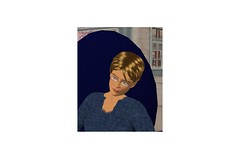Last spring I decided to start researching how institutions that study, produce, and/or teach new/digital/cyber/hyper/whatever media organize themselves. At first I just wanted to see what other places were doing so that as we worked on our new center we would have some sense of possibilities and pitfalls. Pretty quickly I realized that certain choices made by these organizations seemed to really change their character, audiences, etc. Looking for research, I also saw that there wasn’t too much, and most was sort of fragmentary–only about one institution or span of time, one locale, one project, etc. And I started to get really interested in how the philosophy of the institution seemed to shape it’s decisions about who to work with, what the goals were, what counted as success; at the same time funding sources had a powerful effect on these as well, and often created tension.
At first I planned to survey institutions all over as the opportunity arose, but in the US they are so spread out and work in such different contexts that it seemed hard to figure out a coherent approach that would allow comparisons. At the same time, I already was going to the Netherlands for about two weeks during June-July 2007, so I thought I’d interview people there,at first just with the idea of identifying best practices. –There are numerous very well-known institutions in the NL and I figured it would be helpful to hear how they did things.
Those interviews were revelatory because besides being informative about individual institutions, they provided numerous unique perspectives on the cultural scene in the NL. And I suddenly realized that there was so much to say about how knowledge was being created and dispersed, and I was so interested; I should write a book. But I couldn’t figure out how the structure should work or how to include everything, without spending 10 years on it–and I really only want to spend 3-5! Just recently it occurred to me that rather than trying to go all over the US, Europe, Asia, etc. I should start by just looking at the Netherlands because the countries small size yet high concentration of these institutions make them great for comparison. There all kinds of institutions that differ from each other in many ways, but they are all dealing with the same national-level funding scheme, and many of them work together on projects. So certain variables would be reduced or eliminated.
I also just started reading some things about Dispositifs and I think it could be a key notion in my study. Different theorists use it quite differently so I need to get a firmer grip on who has said what, and when, before figuring out how I think it can be applied in my study. One good starting point is some notes Frank Kessler has online at his website. Thanks to Mirko for the connection to Kessler and dispositif.
Now I just have figure out how to say all of this in a really compelling way so I can get a grant or fellowship to go to the Netherlands a bunch more times.


